Key Takeaways
1. Beauty is a Universal and Rational Experience
Beauty can be consoling, disturbing, sacred, profane; it can be exhilarating, appealing, inspiring, chilling. It is never viewed with indifference: beauty demands to be noticed; it speaks to us directly like the voice of an intimate friend.
Philosophical Understanding of Beauty. Beauty is not merely a subjective preference but a rational experience that engages our deeper cognitive capacities. Unlike simple sensory pleasures, aesthetic judgments involve complex intellectual and emotional processes that connect us to broader human experiences.
Key Characteristics of Beauty:
- Transcends mere physical properties
- Invites contemplative engagement
- Challenges us to find meaning
- Connects individual experience to universal insights
Rational Nature of Aesthetic Judgment. Beauty is not arbitrary but rooted in our capacity for reasoned appreciation. When we recognize beauty, we are participating in a profound human activity that goes beyond personal taste, revealing our ability to perceive and appreciate deeper existential meanings.
2. Human Beauty Reveals Individual Subjectivity
Beauty, in a person, prompts desire. But this desire is not merely physical; it is a complex interaction that recognizes the individual's unique personhood.
Embodied Individuality. Human beauty is not about physical perfection but about revealing the unique subjectivity of a person. The most compelling human beauty emerges through facial expressions, gestures, and the way an individual's inner life radiates through their physical presence.
Dimensions of Human Beauty:
- Transcends physical appearance
- Communicates individual character
- Invites contemplative appreciation
- Connects physical and spiritual dimensions
Sacred Dimension of Human Beauty. Our perception of human beauty involves recognizing the profound mystery of individual existence. It is an encounter that simultaneously respects personal dignity and appreciates the ineffable quality of human presence.
3. Natural Beauty Offers Contemplative Transcendence
To see a world in a grain of sand, and a heaven in a wild flower...
Aesthetic Encounter with Nature. Natural beauty is not merely about visual pleasure but a profound experience of connectedness. When we contemplate natural landscapes, organisms, or celestial phenomena, we encounter a deeper sense of order and meaning that transcends immediate sensory experience.
Characteristics of Natural Beauty:
- Reveals underlying cosmic harmony
- Invites meditative reflection
- Connects individual perception to universal patterns
- Suggests metaphysical significance
Transformative Power of Natural Contemplation. By engaging with natural beauty, we temporarily escape utilitarian perspectives and experience a more holistic understanding of existence. This contemplative stance allows us to perceive ourselves as part of a larger, meaningful cosmic context.
4. Everyday Beauty Emerges Through Practical Reasoning
When you lay the table for guests, you will not simply dump down the plates and cutlery anyhow. You will be motivated by a desire for things to look right.
Aesthetic Dimensions of Practical Life. Beauty is not confined to high art or extraordinary experiences but emerges in everyday activities. Our practical reasoning constantly involves aesthetic judgments about proportion, harmony, and appropriateness.
Aesthetic Principles in Daily Life:
- Seeking visual and functional harmony
- Making choices that reflect cultural and personal values
- Creating meaningful environments
- Expressing identity through arrangement
Social Coordination Through Aesthetic Judgment. Our everyday aesthetic choices are not merely personal but contribute to social understanding. By making things "look right," we participate in a collective process of creating shared meanings and experiences.
5. Artistic Beauty Creates Meaning Through Expression
Beauty in art is bound up with expression: there are not two qualities here, the beauty and the expression, but one quality.
Art as Meaningful Presentation. Artistic beauty goes beyond representation, creating meaning through unique forms of expression. Artists transform raw experience into coherent, emotionally resonant representations that reveal deeper truths about human existence.
Dimensions of Artistic Expression:
- Transcends literal representation
- Communicates complex emotional and intellectual experiences
- Creates new perspectives on reality
- Invites active interpretation
Metaphorical Nature of Artistic Meaning. Artistic beauty operates through metaphorical connections, allowing audiences to experience familiar realities from transformed perspectives. This process of meaning-making is itself a profound aesthetic experience.
6. Taste Reflects Deeper Cultural and Personal Values
Taste is a form of social intelligence, a way of navigating cultural meanings and personal aspirations.
Taste as Cultural Navigation. Our aesthetic judgments are not arbitrary but reflect complex cultural negotiations. Taste involves understanding subtle social codes, personal values, and broader historical contexts.
Dimensions of Taste:
- Communicates social belonging
- Expresses personal identity
- Negotiates cultural boundaries
- Evolves through critical reflection
Rational Foundations of Aesthetic Judgment. While taste involves personal preference, it is not purely subjective. Aesthetic judgments can be discussed, refined, and understood through reasoned dialogue.
7. Erotic Art Distinguishes Between Objectification and Individuality
Pornography reduces persons to objects, while erotic art celebrates individual subjectivity.
Ethical Dimensions of Representation. Erotic art is distinguished by its ability to represent human sexuality while preserving individual dignity. Unlike pornography, which objectifies, true erotic art celebrates personal complexity.
Principles of Ethical Representation:
- Respects individual subjectivity
- Avoids reducing persons to sexual objects
- Explores complexity of human desire
- Maintains aesthetic and moral integrity
Aesthetic and Moral Integrity. The representation of human beauty requires a delicate balance between acknowledging physical desire and recognizing profound individual humanity.
8. Contemporary Culture Risks Desecrating Beauty
Beauty is vanishing from our world because we live as though it did not matter.
Cultural Challenges to Beauty. Contemporary culture often prioritizes shock, transgression, and superficial stimulation over meaningful aesthetic experiences. This tendency risks losing the transformative potential of beauty.
Cultural Risks:
- Prioritizing effect over meaning
- Commodifying aesthetic experience
- Losing capacity for deep contemplation
- Reducing art to mere entertainment
Resistance Through Aesthetic Education. Preserving beauty requires conscious cultural effort to reestablish its significance beyond mere consumption.
9. Beauty Connects Us to Higher Spiritual Aspirations
Beauty tells us that we are at home in the world, that the world is already ordered in our perceptions as a place fit for the lives of beings like us.
Transcendental Significance of Beauty. Beauty is not merely an aesthetic experience but a profound connection to higher spiritual and existential meanings. It reveals our capacity to perceive order, meaning, and possibility beyond immediate circumstances.
Spiritual Dimensions of Beauty:
- Suggests metaphysical order
- Invites transcendence
- Connects individual experience to universal meaning
- Offers hope and redemption
Beauty as Spiritual Practice. Engaging with beauty becomes a form of spiritual discipline, training us to perceive deeper realities and maintain hope in challenging circumstances.
Last updated:
FAQ
What's "Beauty" by Roger Scruton about?
- Exploration of Beauty: The book delves into the concept of beauty, examining its role and significance in various aspects of life, including art, nature, and human relationships.
- Philosophical Approach: Scruton approaches beauty from a philosophical perspective, drawing on the works of past philosophers like Plato and Kant to explore its deeper meanings.
- Universal Value: The book argues that beauty is a real and universal value, essential for shaping the human world and enriching our lives.
- Cultural and Historical Context: It also considers the historical and cultural contexts of beauty, discussing how perceptions have evolved over time.
Why should I read "Beauty" by Roger Scruton?
- Deep Understanding: The book provides a profound understanding of beauty, encouraging readers to appreciate its presence in everyday life and art.
- Philosophical Insight: It offers philosophical insights into how beauty relates to truth, goodness, and the sacred, making it a thought-provoking read.
- Cultural Critique: Scruton critiques modern culture's flight from beauty, offering a compelling argument for its importance in contemporary society.
- Personal Enrichment: Reading this book can enrich one's personal appreciation of beauty, enhancing the ability to find meaning and value in the world.
What are the key takeaways of "Beauty" by Roger Scruton?
- Beauty's Universality: Beauty is a universal value that transcends cultural and historical boundaries, playing a crucial role in human life.
- Philosophical Dimensions: The book explores beauty's philosophical dimensions, linking it to concepts like truth, goodness, and the sacred.
- Cultural Criticism: Scruton critiques the modern tendency to dismiss beauty, arguing for its essential role in art and life.
- Aesthetic Judgement: The book emphasizes the importance of aesthetic judgment and taste, advocating for a deeper engagement with beauty.
How does Roger Scruton define beauty in "Beauty"?
- Beyond Simple Definition: Scruton avoids a simple definition, instead exploring beauty as a complex experience that challenges us to find meaning.
- Rational Foundation: He argues that beauty is rationally founded, involving critical comparisons and examinations of our lives and emotions.
- Experience-Centric: Beauty is about a particular experience of objects, prompting a pursuit of meaning and value.
- Objective and Subjective: While beauty involves subjective experience, it also has objective elements that can be universally appreciated.
What is the relationship between beauty and desire in "Beauty"?
- Platonic Influence: Scruton discusses Plato's idea that beauty prompts desire, but also suggests that desire can transcend the physical to appreciate beauty contemplatively.
- Desire's Dual Nature: He explores the dual nature of desire, which can be both a physical urge and a spiritual force seeking the individual.
- Erotic Art: The book examines how beauty in art can represent desire without reducing it to mere physical attraction.
- Moral Implications: Scruton highlights the moral implications of desire, emphasizing the importance of respecting the individuality and subjectivity of the beautiful.
How does "Beauty" by Roger Scruton address the concept of natural beauty?
- Historical Context: The book discusses the historical context of natural beauty, particularly its prominence in 18th-century philosophy.
- Kant's Influence: Scruton draws on Kant's idea that natural beauty is a universal experience, accessible to all rational beings.
- Nature vs. Art: He distinguishes between the beauty of nature and art, emphasizing nature's independence and lack of human design.
- Aesthetic Experience: The book explores how natural beauty provides a sense of belonging and reassurance, connecting us to the world.
What role does art play in "Beauty" by Roger Scruton?
- Artistic Beauty: Scruton examines artistic beauty as a form of meaning and an object of taste, distinct from mere entertainment.
- Expression and Representation: The book discusses how art expresses emotions and represents worlds, offering insights into the human condition.
- Critique of Modern Art: Scruton critiques modern art's departure from beauty, arguing for a return to art's traditional role in conveying transcendent values.
- Art and Morality: He explores the moral dimensions of art, emphasizing its potential to open our eyes to others and discipline our sympathies.
How does "Beauty" by Roger Scruton critique modern culture's approach to beauty?
- Flight from Beauty: Scruton argues that modern culture often rejects beauty, favoring transgression and shock over traditional aesthetic values.
- Desecration: He discusses the tendency to desecrate beauty, viewing it as a challenge to narcissism and a call to reverence.
- Cultural Consequences: The book warns of the cultural consequences of abandoning beauty, including a loss of meaning and value in art and life.
- Call for Renewal: Scruton calls for a renewal of beauty's role in culture, advocating for art that honors transcendent values.
What is the significance of aesthetic judgment in "Beauty" by Roger Scruton?
- Central Role: Aesthetic judgment is central to the book, seen as a necessary part of engaging with beauty and achieving order in life.
- Subjectivity and Objectivity: Scruton explores the balance between subjective experience and objective standards in aesthetic judgment.
- Cultural and Social Impact: The book discusses how aesthetic judgment influences culture and social interactions, shaping our shared environment.
- Moral Dimensions: Aesthetic judgment is linked to moral character, reflecting and shaping our values and ideals.
How does "Beauty" by Roger Scruton relate beauty to truth and goodness?
- Philosophical Tradition: Scruton draws on the philosophical tradition that links beauty, truth, and goodness as ultimate values.
- Moral and Aesthetic Values: The book explores how beauty can reveal moral and aesthetic values, offering insights into the human condition.
- Art's Role: Art plays a key role in this relationship, presenting beauty as a way to understand and appreciate truth and goodness.
- Cultural Critique: Scruton critiques modern culture's separation of these values, arguing for their reintegration in art and life.
What are the best quotes from "Beauty" by Roger Scruton and what do they mean?
- "Beauty can be consoling, disturbing, sacred, profane; it can be exhilarating, appealing, inspiring, chilling." This quote captures the multifaceted nature of beauty and its profound impact on human experience.
- "Beauty demands to be noticed; it speaks to us directly like the voice of an intimate friend." Here, Scruton emphasizes beauty's compelling presence and its ability to engage us deeply.
- "The experience of beauty guides us along this second path: it tells us that we are at home in the world." This quote highlights beauty's role in providing a sense of belonging and harmony in the world.
- "Art answers the riddle of existence: it tells us why we exist by imbuing our lives with a sense of fittingness." Scruton underscores art's power to give meaning and purpose to human life through beauty.
How does "Beauty" by Roger Scruton address the concept of kitsch?
- Kitsch as Degradation: Scruton discusses kitsch as a degradation of art and culture, characterized by sentimentality and lack of genuine emotion.
- Cultural Impact: The book explores how kitsch affects culture, leading to a loss of authenticity and depth in artistic expression.
- Contrast with True Art: Scruton contrasts kitsch with true art, which seeks to elevate and inspire through genuine beauty and meaning.
- Moral Implications: Kitsch is seen as a moral failing, reflecting a deficiency in feeling and a retreat from the higher values that art should embody.
Review Summary
Beauty by Roger Scruton explores the concept of beauty from a philosophical perspective. Reviewers appreciate Scruton's insights on everyday beauty, his critique of modern art, and his defense of classical aesthetics. Some praise his writing style and depth of analysis, while others find his views elitist or narrow-minded. The book's discussions on pornography, kitsch, and the importance of beauty in human life are particularly noted. Despite disagreements, many readers find the book thought-provoking and valuable for understanding aesthetics and the role of beauty in society.
Very Short Introductions Series Series

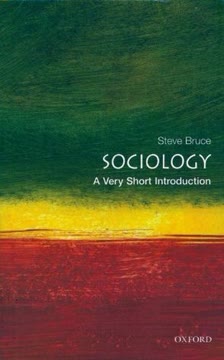

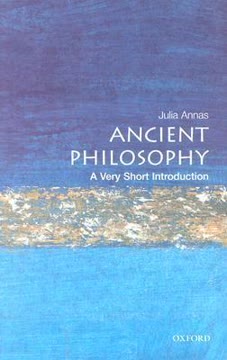

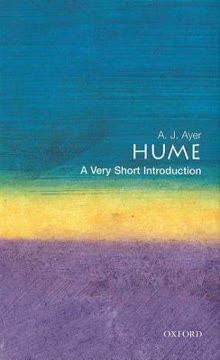


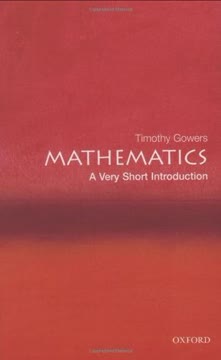
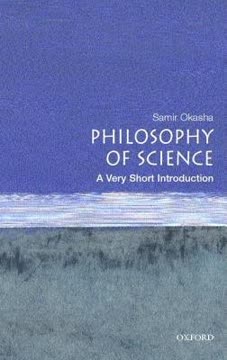
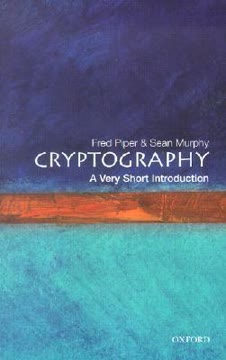
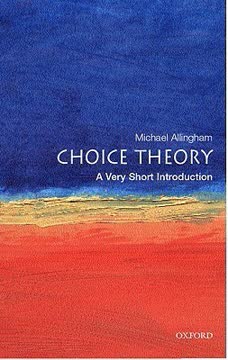
Similar Books










Download PDF
Download EPUB
.epub digital book format is ideal for reading ebooks on phones, tablets, and e-readers.






